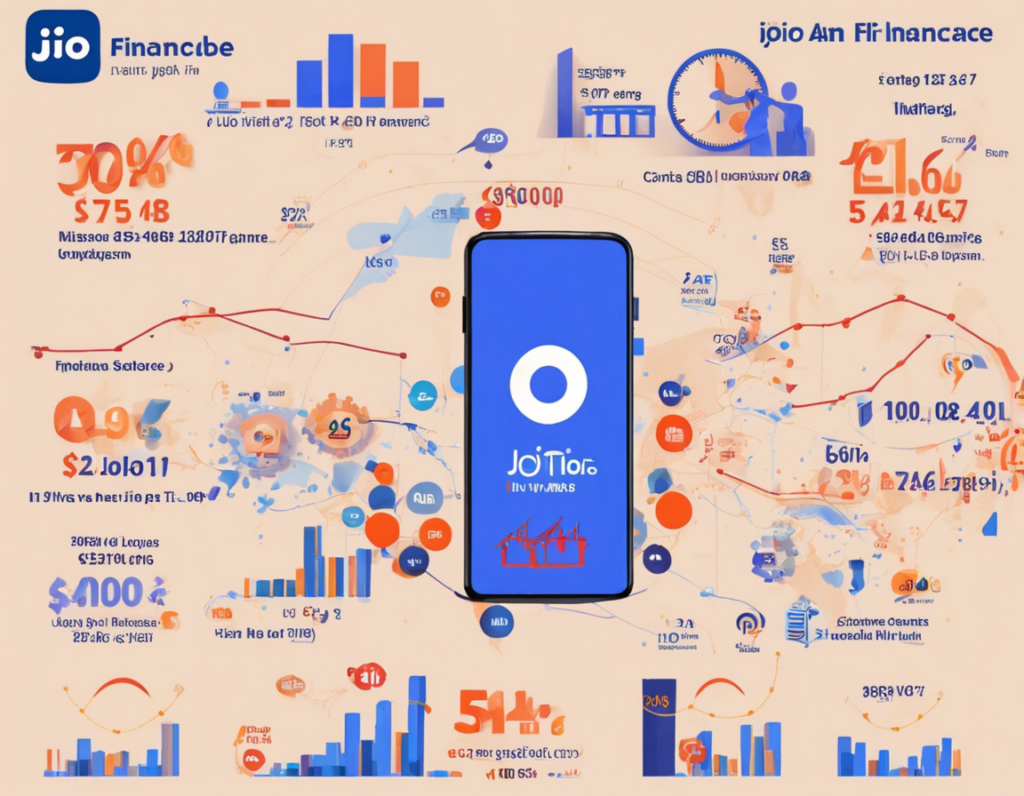The Jio Finance company has been making waves in the financial market with its innovative products and services. Investors are always keen to track the share price trends of Jio Finance to make informed decisions. Analyzing these trends requires a comprehensive understanding of various factors that influence the stock market.
Understanding Share Price Trends
Share price trends refer to the historical movement of a company’s stock price over a specific period. Analyzing these trends can help investors predict future price movements and make informed investment decisions. Several factors can influence share prices, including market demand, company performance, economic indicators, and global events.
Factors Influencing Jio Finance Share Price Trends
-
Company Performance: Jio Finance’s financial performance, revenue growth, profit margins, and market share can impact its share price. Investors often look at key financial ratios and metrics to assess the company’s health.
-
Market Demand: The demand for Jio Finance’s stock in the market can drive its share price up or down. Factors such as investor sentiment, institutional buying, and market speculation can influence demand.
-
Economic Indicators: Macro-economic indicators such as interest rates, inflation, GDP growth, and unemployment rates can impact the overall stock market, including Jio Finance’s share price.
-
Regulatory Environment: Changes in regulations, industry policies, or government interventions can affect Jio Finance’s operations and consequently its share price.
-
Competitor Performance: The performance of Jio Finance’s competitors can also influence its share price. Investors compare company performance relative to industry peers to gauge competitiveness.
Analyzing Jio Finance Share Price Trends
Technical Analysis: Technical analysis involves studying historical price charts, volume trends, and trading patterns to forecast future price movements. Common tools used in technical analysis include moving averages, support and resistance levels, and relative strength index (RSI).
Fundamental Analysis: Fundamental analysis focuses on evaluating a company’s financial health, management team, industry position, and growth prospects. Investors analyze financial statements, earnings reports, and industry trends to assess the intrinsic value of a stock.
Sentiment Analysis: Sentiment analysis involves gauging market sentiment, investor emotions, and news sentiment to predict stock price movements. Social media, news articles, and analyst reports can provide valuable insights into market sentiment.
Key Metrics to Track
- Earnings Per Share (EPS)
- Price-Earnings (P/E) Ratio
- Return on Equity (ROE)
- Debt-to-Equity Ratio
- Dividend Yield
Risk Management Strategies
- Diversification: Spread investment across different asset classes to minimize risk.
- Stop-Loss Orders: Set predefined exit points to limit losses.
- Asset Allocation: Allocate assets based on risk tolerance and investment goals.
- Risk Assessment: Regularly assess and review risk exposure in the portfolio.
FAQs
1. How often should I track Jio Finance’s share price trends?
– It is recommended to track share price trends regularly, at least on a daily or weekly basis, to stay informed about market developments.
2. What are the common tools used in technical analysis?
– Common tools include moving averages, support and resistance levels, and relative strength index (RSI).
3. How can economic indicators impact Jio Finance’s share price?
– Economic indicators such as interest rates, inflation, GDP growth, and unemployment rates can influence overall market sentiment and, consequently, Jio Finance’s share price.
4. What is the significance of sentiment analysis in predicting share price trends?
– Sentiment analysis helps investors gauge market sentiment, investor emotions, and news sentiment to anticipate stock price movements.
5. Why is diversification important in risk management strategies?
– Diversification helps spread investment across different asset classes to reduce the impact of market fluctuations on a single investment.
6. How can I assess the fundamental health of Jio Finance as a company?
– Assess the company’s financial statements, earnings reports, management team, growth prospects, and industry position to evaluate its fundamental health.
In conclusion, analyzing Jio Finance’s share price trends requires a holistic approach that combines technical, fundamental, and sentiment analysis. By understanding the key factors influencing share prices and employing effective risk management strategies, investors can make informed decisions in the volatile stock market environment. Stay updated on market developments and seek professional advice when needed to enhance your investment strategy.
